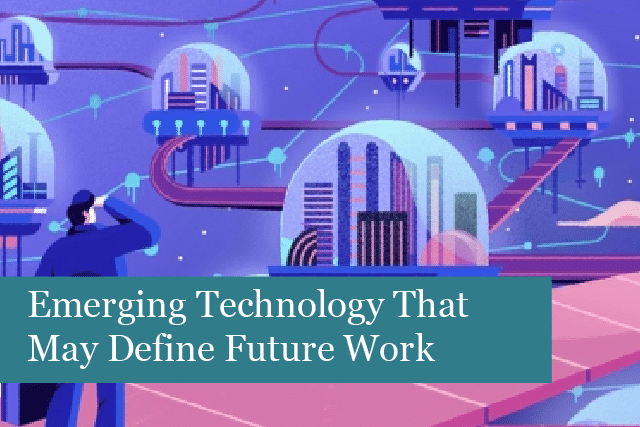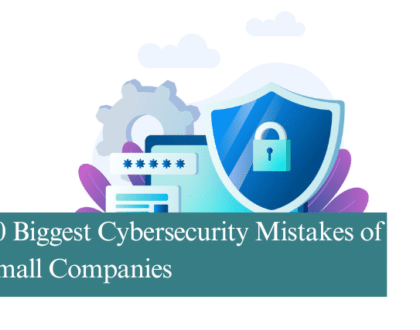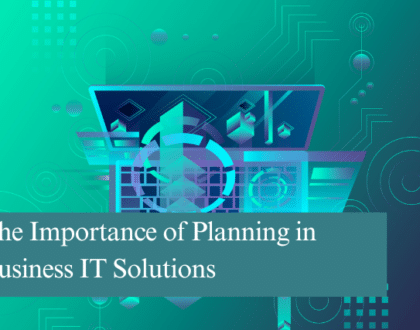
The way we work continues to change. Today, emerging technologies can even make working in the future safer and more flexible. In just the last two or three years, businesses have begun to accept that remote work is staying. With this development, many companies have started to adopt technologies that make remote work even more flexible and accessible.
In this article, we’ll review some emerging technologies that may have a similar effect on how we work in the future!
1. AR (Augmented Reality) Cloud
The AR (Augmented Reality) Cloud is a term used for several technologies that use AR to create an immersive user experience that overlays digital content on a user’s physical environment. This tech is viewed through the lens of an AR-enabled device.
Today’s AR apps are most often delivered via phone and tablets. However, AR Cloud apps can run on glasses or even head-mounted displays (HMDs) and be controlled with voice commands.
Context-awareness is crucial in an AR cloud environment, or the tech won’t be any different than today’s AR apps. AR cloud apps must be aware of the user’s location and time and the specific object the user wishes to find information about.
True AR cloud technologies are not able to work with today’s tech. That means new technologies must be developed in order for the AR cloud to be usable. This technology will need to heavily rely on 5G, AI, edge computing, the IoT, and more. While some of these technologies are available, they’re not mature enough for AR cloud tech.
AR cloud technology could be used to help a realtor show potential buyers around a home. Both would need to wear AR cloud glasses, with context-aware information enabled. But what a great way to show a home!
There are many ways this technology may be used in the future, and each one is exciting to think about!
2. Advanced Virtual Assistant (AVA)
Advanced Virtual Assistant (AVA) technology is also considered the next generation of the Virtual Personal Assistant (VPA). What would this look like? Think of Alexa with a major upgrade!
AVA solutions are usually built with tech such as Natural Language Processing (NLP) and Robotic Process Automation (RPA). These technologies respond to voice commands or questions, like Amazon’s Alexa, Microsoft’s Cortana, Google Assistant, and Apple’s Siri. However, AVA solutions are more useful for businesses and organisations than these virtual personal assistance technologies.
AVA’s can be useful for tech writers, researchers, programmers, system analysts, and more. They need to ask their AVA questions while working and get answers as they work! What a great resource for knowledge workers. They’ll be able to complete their tasks in projects in a shorter amount of time.
3. Homomorphic Encryption
Homomorphic encryption is in the middle of conducting mass processing of information and keeping privacy secure. It runs computations on and analysis of encrypted data without decryption or loss of confidentiality. Data can be outsourced and used by external parties, even while keeping all data secure.
Homomorphic encryption allows businesses in banking, healthcare, and other sectors to safely analyse data and conduct searches without compromising the security of their customers and privacy regulations.
In the past, it was only possible to encrypt data-at-rest and data-in-motion. However, homomorphic encryption makes it possible to also encrypt data-in-use. Not only does homomorphic encryption reduce the risk of accidental data leaks, but it also means businesses are able to collaborate on projects that involve outsourcing and more that were too risky in the past.
4. Synthetic Data
Technologies such as machine learning (ML) and artificial intelligence (AI) require lots of data. However, some types of data are not usable, while others may need to be omitted (such as personal data). Synthetic data can make a huge difference when it comes to unusable data.
Synthetic data is pieces of data generated through simulations and computer algorithms, which are then used as alternatives to real data.
AI-created synthetic data is simulated data that virtually retains the accuracy of the original data. This is accomplished through the use of complex patterns formed deeply in neural networks. With more data, real, non-sensitive data can be supplemented with synthetic data. The goal is to improve the accuracy of AI simulations, allowing a company to simulate business models, user behaviour, and more.
Synthetic data allows companies to minimise losses and improve their profits. Scientists can also benefit from synthetic data by cutting down on the time needed for data collection. That means analysts and other employees can make adjustments based on trends in record time rather than based on the competition.
5. Portable, Foldable Monitors
What would you think of taking your monitor from the office to work at home? Well, upcoming changes in technology may mean just that! What a boon for those who work remotely to just fold up their monitor and take it home. That gives new meaning to portable devices.
OLED technology may make it possible to fold, bend, and roll a screen to make it more portable. Think of the convenience! For one thing, when you’re done working at home, simply fold the monitor and put it away. Then you can use the desk or tabletop for other projects.
6. Recycling Tech
What could be better than tech that can easily be recycled? Recyclable materials such as plastic, fibres, and metals that could easily be recycled or that self-decomposed would be a boon to the planet. What could be better than renewable tech made from sustainable resources such as bamboo? The goal for recycling tech is to ensure that everything is reused and poses no danger to the environment.
As tech changes, many items in the office will be made of recyclable materials. What a great way to ensure the environment stays clean and our supply chains are better optimised?
Summing It Up
Upcoming and new technologies will make huge changes in the way our businesses operate in the future. The hope is all of this tech will make business operations smoother and more efficient while being environmentally friendly at the same time.
All of this is possible in the not too distant future!
Recommended Posts

How to Get the Most Out of Your IT Budget
25th April 2025

10 Biggest Cybersecurity Mistakes of Small Companies
18th April 2025

The Importance of Planning in Business IT Solutions
11th April 2025
